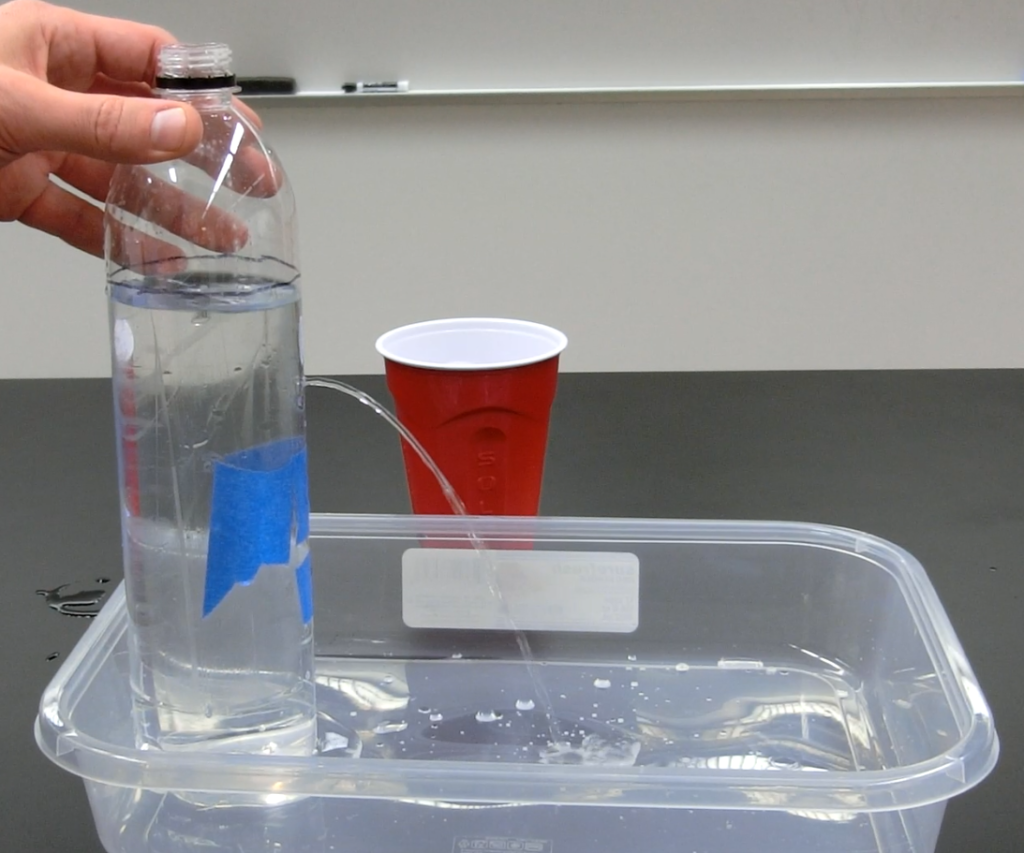Fluid Dynamics
In this experiment you’ll study fluid dynamics using a plastic bottle full of water. The bottle has a marked fill line, three equally-sized (1/8″ diameter) holes at different heights, and three differently-sized holes (1/16″, 1/8″, and 1/4″) all at the same height.
Objectives
- Make qualitative predictions for each of the questions listed below, and test your predictions. If they prove incorrect, explain how you correct your thinking.
- Calculate where the stream of water from each of the 1/8″ holes will land if the water level in the bottle is at the fill line.
- Measure the landing point for the water stream from each 1/8″ hole and compare to your calculation.
Resources
- Water bottle with holes as described above
- Tray for catching water
- Cup for refilling bottle to fill line
- Ruler
Predictions
- Which 1/8″ hole will project a stream of water the farthest when the water level is at the fill line?
- Of the holes at equal heights, which will project a water stream the farthest when the water level is at the fill line?
- Which hole will drain the bottle the fastest?
- Will water stream out slower or faster if you put the cap on the bottle?
Background
In an incompressible flowing fluid, the following holds true:
\tfrac{1}{2}\rho v^2 + \rho g h + P = \textrm{constant}where \rho is the fluid density, v is the fluid velocity, h is the height of the fluid column above the point in question, and P is the external pressure. For fluid streaming from a hole at a height y in a reservoir, such as a bottle of water, filled to a height h, the above equation can be used to show that the velocity of the fluid streaming out of a hole is
v=\sqrt{2g(h-y)}This can be combined with simple kinematics to show that the distance from the bottle at which the stream lands should be
D = 2\sqrt{y(h-y)}